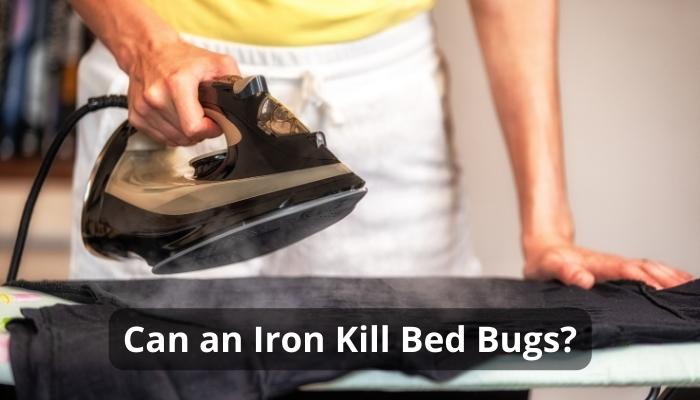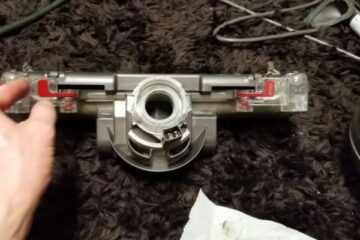Bed bugs have been a source of discomfort and distress in human dwellings for ages. These tiny, elusive pests are notorious for their resilience and ability to thrive in various environments, mainly where humans rest and sleep. The persistent problem of bed bugs stems from their exceptional adaptability and resistance to many conventional pest control methods. They are not merely nuisances; their presence can cause significant psychological stress and physical discomfort due to their itchy bites. The quest for practical solutions has led to many approaches, ranging from chemical treatments to natural alternatives. Yet, one question remains: Can traditional household tools, like iron, provide a reliable defence against these stubborn insects?
Understanding Bed Bugs
One must first understand their biology and behaviour to combat bed bugs effectively. Bed bugs are small, wingless insects that feed exclusively on the blood of warm-blooded animals, with a particular preference for humans. They are mainly nocturnal, emerging from their hiding places at night to feed on unsuspecting hosts. Their flat bodies enable them to squeeze into tiny crevices, making them difficult to detect and eradicate. The life cycle of a bed bug, from egg to adult, is influenced by temperature and food availability. Under optimal conditions, they can rapidly multiply, leading to infestations that are hard to control.
The key to their vulnerability lies in their weakness to heat. Bed bugs are susceptible to high temperatures at all stages of their life cycle. This thermal sensitivity is a critical aspect to exploit when considering eradication methods. Heat treatments have become a popular and effective way to address infestations. Bed bugs cannot withstand prolonged exposure to temperatures above 118°F (48°C). This fact raises the potential for using heat-generating household appliances, such as irons, as a part of a comprehensive bed bug management strategy.
Can Ironing Be Effective Against Bed Bugs?
Whether ironing can be an effective measure against bed bugs invites a closer look at the science of heat treatment. Heat is a well-known enemy of bed bugs and is the basis for many professional extermination methods. The science behind heat treatment is straightforward: bed bugs are susceptible to temperature changes, and exposure to high temperatures can disrupt their cellular function, leading to dehydration and eventual death. This method is particularly effective because it can penetrate into the nooks and crannies where bed bugs hide, areas that are often unreachable by traditional chemical treatments.
Understanding this, ironing might offer a DIY solution to the bed bug dilemma. When applied directly to infested areas, an iron generates heat that can kill bed bugs on contact. The steam from an iron can reach temperatures high enough to be lethal to these pests, and the direct application ensures that the heat penetrates their hidden sanctuaries. However, it’s not just about swiping an iron over your sheets; effective ironing requires a systematic approach. You must systematically treat all potential hideouts, including mattress seams, box springs, and even curtain folds, ensuring the steam reaches deep enough to exterminate the bugs and their eggs.
The Science Behind Heat Treatment
At the heart of heat treatment is the principle of thermal death time, which refers to the time it takes to kill an organism at a specific temperature. The thermal death point for bed bugs is reached relatively quickly at temperatures above 118°F (48°C). Still, the challenge lies in maintaining that temperature sufficiently to ensure a complete kill. The science is precise: if the heat can be sustained and evenly distributed, it can be a potent weapon against bed bugs.
How Ironing Can Help
Ironing can help fight against bed bugs by bringing this science into the home. A household iron can reach temperatures well above the thermal death point for bed bugs. With its ability to produce steam, it can deliver heat in an intense and targeted way. The steam kills bed bugs on contact and permeates through fabric layers, potentially reaching even well-hidden bugs. For items that can withstand high heat, such as bedding and clothing, ironing can effectively eliminate bed bugs without using chemicals. It’s a method that requires patience and precision, as you’ll need to iron over every inch of fabric where bed bugs could be lurking. But ironing could be a valuable addition to their pest control arsenal for those willing to put in the effort.
Step-by-Step Guide to Using an Iron Against Bed Bugs
When it comes to using iron against bed bugs, preparation is critical. Before you even heat up your iron, you must prepare your space to ensure the process is as effective as possible. Start by stripping your bed of all linens and washable items, such as sheets, pillowcases, and blankets. These should be laundered at the highest temperature the fabric can handle to kill any bed bugs or eggs that may be present. Next, clear the area around the bed to create a workspace free of clutter where bed bugs could escape. Vacuum the mattress, bed frame, and surrounding area thoroughly to remove any visible bed bugs and their debris. Seal and dispose of the vacuum bag immediately to prevent any captured bugs from escaping.
Once your space is prepared, it’s time to focus on the ironing techniques that will maximize effectiveness. Set your iron to the highest steam safe for your treatment materials. Begin with the mattress, paying particular attention to seams, tufts, and edges where bed bugs are likely to hide. Move the iron over these areas, allowing the steam to penetrate deeply. The steam not only kills bed bugs on contact but also reaches into the small crevices that are inaccessible to other treatment methods. After the mattress, move on to different areas of concern, such as curtains, carpets, and upholstered furniture. Remember, the goal is to expose every potential hiding spot to the lethal heat of the steam, so patience and thoroughness are crucial.
In other words, while iron can be a valuable tool in the fight against bed bugs, it’s essential to use it as part of a broader integrated pest management strategy. Ironing alone may not be enough to completely eradicate an infestation. Still, when combined with other methods, it can significantly reduce the bed bug population and contribute to the overall effectiveness of your efforts. Always follow up with regular inspections and treatments to maintain a bed bug-free environment.
Expert Opinions and DIY Success Stories
The internet is rife with discussions on unconventional methods to tackle bed bug infestations, and ironing has undoubtedly had its fair share of the spotlight. On platforms like Reddit, users often share their personal battles against bed bugs. Ironing has emerged as a surprisingly effective DIY technique among the myriad of suggestions. These anecdotal success stories typically come from individuals who, driven by desperation and the desire for immediate relief, turned to their household iron as a weapon against these pests. They recount how the direct heat from the iron to their mattresses, furniture, and clothing provided a sense of control over the infestation. While not scientifically verified, these stories offer a glimmer of hope and a potential tool for those seeking to augment professional treatments or manage minor infestations.
Similarly, Quora users contribute to the collective knowledge with practical tips and experiences. They emphasize the importance of caution and patience when using an iron to combat bed bugs. The consensus among these community-driven solutions is that while ironing can kill bed bugs on contact, it should not be relied upon as the sole eradication method. Instead, it’s recommended as a supplementary tactic, part of a larger integrated pest management strategy that includes thorough cleaning, vacuuming, and protective covers.
Final Thoughts
In summarizing the ironing method, it’s clear that while this approach can effectively kill bed bugs on contact, it is not a cure-all. The effectiveness of ironing is contingent upon the thoroughness of the application and the ability to reach all infested areas. It’s a labour-intensive process that requires diligence and attention to detail. As such, ironing should be viewed as one component of a multifaceted approach to bed bug eradication. This method is best used with other proven strategies, such as encasements, heat treatments, and insecticides, to ensure a comprehensive defence against these resilient pests.
FAQs: Addressing Common Concerns About Ironing for Bed Bug Eradication
Several frequently asked questions arise when considering using an iron to combat bed bugs. Each requires careful consideration to ensure effectiveness and safety.
What Temperature Should the Iron Be Set to Kill Bed Bugs?
The temperature setting on the iron is a critical factor in the success of this method. To effectively kill bed bugs, the iron must reach a temperature lethal to these pests. Research indicates that bed bugs perish when exposed to temperatures of 118°F (48°C) or higher. Therefore, the iron should be set to the highest steam the fabric can tolerate without damage. This ensures that the heat is sufficient to penetrate the areas where bed bugs may hide and disrupt their cellular function, leading to dehydration and death.
How Long Does It Take for the Heat from an Iron to Kill Bed Bugs?
The duration of heat application is just as important as the temperature. To ensure that bed bugs are eradicated, iron must be applied for sufficient time to allow the heat to penetrate the fabric and reach the insects. Typically, this means that each section of the infested area should be ironed for several minutes, with particular attention paid to seams, folds, and other crevices where bed bugs are known to hide. The exact time may vary depending on the material and the severity of the infestation, but thoroughness is critical.
Can Ironing Alone Completely Eliminate a Bed Bug Infestation?
While ironing can kill bed bugs on contact, it is unlikely to completely eliminate an infestation. Bed bugs are adept at hiding in places difficult to reach, even with an iron. For this reason, ironing should be used as part of a comprehensive bed bug management plan. This plan may include additional methods such as vacuuming, laundering infested items in hot water, using bed bug-proof encasements for mattresses and pillows, and, in severe cases, enlisting the help of professional pest control services.
What Are the Risks Associated with Using an Iron for Bed Bug Treatment?
Using an iron to treat bed bugs carries certain risks. The primary concern is the potential for damage to fabrics and surfaces that cannot withstand high heat. There is also a risk of burns to the user or fire starting if the iron is left unattended or misused. Additionally, reliance on ironing alone may give a false sense of security, leading to neglect of other necessary eradication methods and potentially allowing the infestation to persist or worsen.
What Other Methods Should Be Combined with Ironing to Ensure Bed Bug Eradication?
Ironing should be combined with other proven methods to maximize the chances of completely eradicating bed bugs. These may include using a vacuum cleaner with a HEPA filter to remove bed bugs and their eggs from surfaces, laundering all washable items at high temperatures, applying diatomaceous earth or other desiccants to affected areas, sealing cracks and crevices where bed bugs can hide, and, if necessary, using chemical treatments that are specifically designed to target bed bugs. By employing a multi-pronged approach, the likelihood of successfully eliminating the infestation increases significantly.
In summary, while ironing can be a valuable tool in the fight against bed bugs, it is essential to approach the problem with a strategic and comprehensive plan that addresses all potential hiding spots and combines various effective methods. This approach ensures the best chance of success and a return to a bed bug-free environment.






